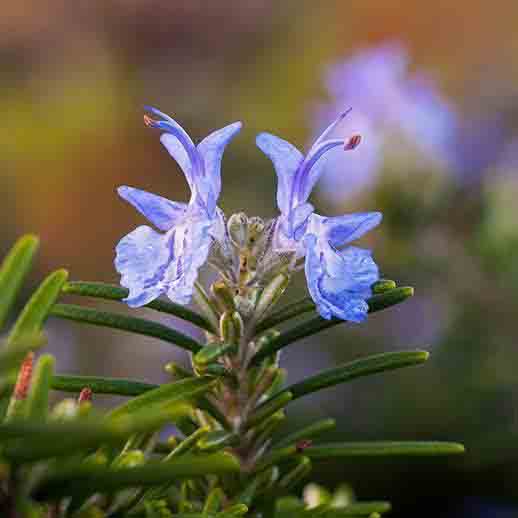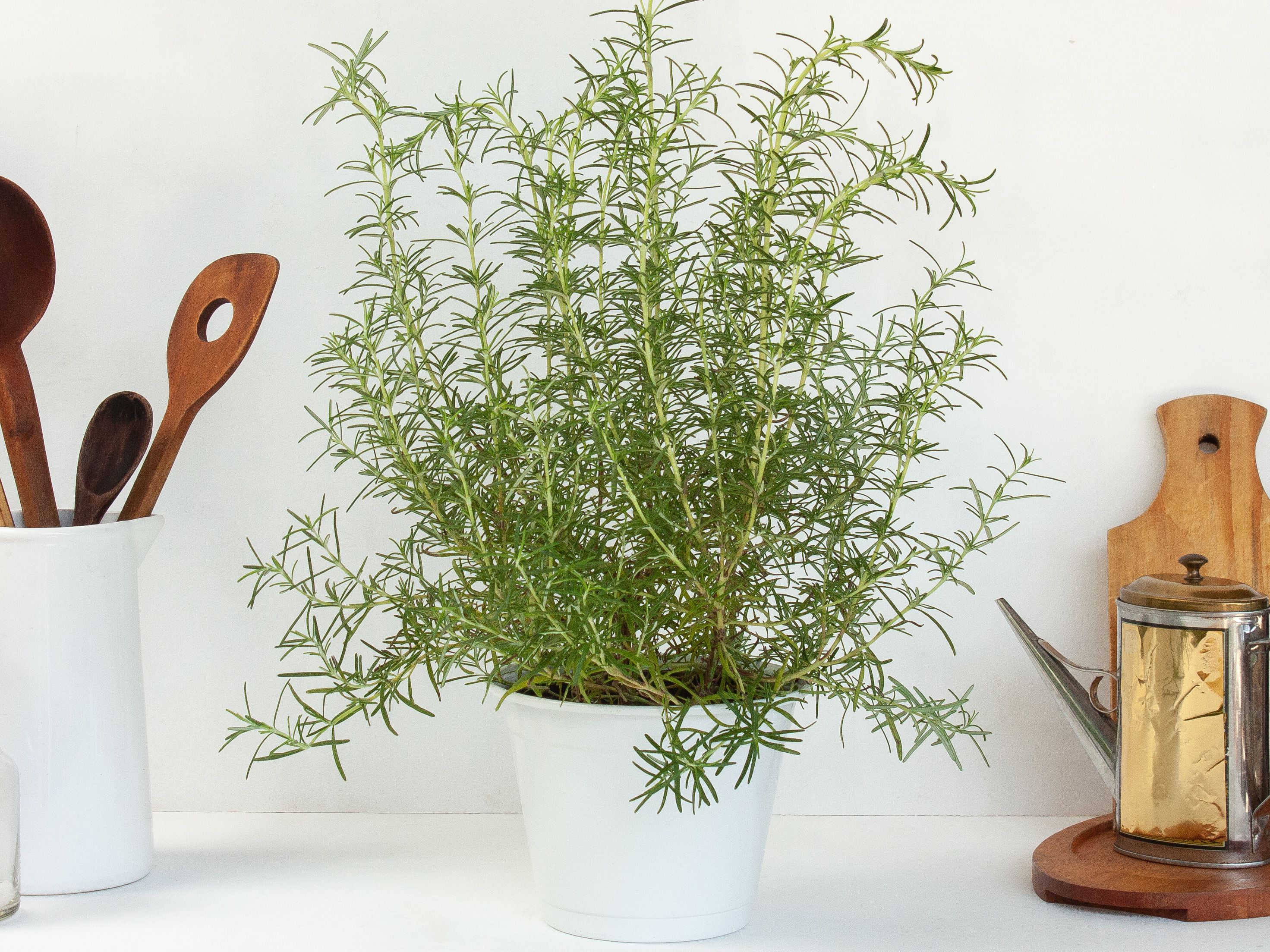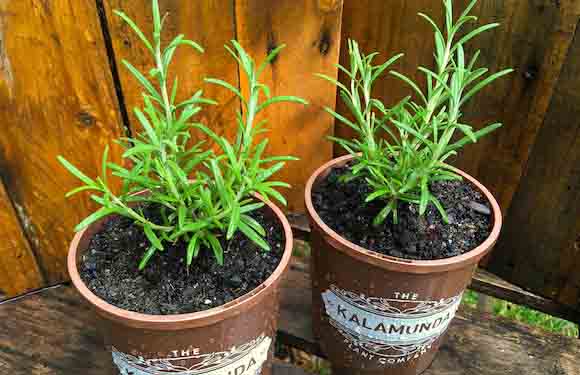Rosemary Profile
Written by Joy
Oct 28 2021

Rosemary is a shrub of Dicotyledon, Lamiaceae, and Rosemary. It prefers a warm climate and is native to Europe and the Mediterranean coast of northern Africa. There are occasional applications in the garden.
Rosemary CharacteristicsRosemary HabitsRosemary UsesIndustrial valueMedicinal valueEdible valueRosemary Propagation
From rosemary flowers and leaves, antioxidants and rosemary essential oils with excellent antioxidant properties can be extracted. Rosemary antioxidant, it is widely used in the preservation of medicine, fried food, oil-rich food, and all kinds of fats and oils; while rosemary essence is used in the daily chemical industry such as spice, air freshener, and repellent, sterilization, and insecticide.
Rosemary Characteristics
The flowers of rosemary are nearly sessile, opposite, and a few gathered at the tips of short branches to form racemes; its bracts are small and stalked. The calyx is ovate and bell-shaped, about 4 mm long, densely covered with white stellate villi and glands on the outside, glabrous on the inside, 11 veins, two-lipped, upper lip sub-round, entire or short with 3 teeth, lower lip 2 teeth, oval triangular teeth. The corolla is blue-purple, less than 1 cm long, sparsely pubescent on the outside, glabrous on the inside, and the crown tube is slightly extended.
Rosemary Habits
Rosemary likes a warm climate, but it grows slowly in the high-temperature period on flat land in Taiwan, China. The temperature without a cold current in winter is more suitable for its growth. In terms of water supply, rosemary leaves are leathery and more drought-tolerant, so they are planted. The soil is rich in the sand to enable good drainage and is more conducive to growth and development. It is worth noting that rosemary grows slowly, so its regeneration ability is not strong.Rosemary is native to Europe and the Mediterranean coast of North Africa and is mainly cultivated as an economic crop in southern Europe.
Rosemary Uses
Industrial value


Medicinal value
Rosemary has sedative, soothing, and refreshing effects, and has certain effects on indigestion and stomachache. After smashing it, you’d better soak it in boiling water and drink it, 2-3 times a day, it can have a calming and diuretic effect. It can also be used to treat insomnia, heart palpitations, headaches, indigestion, and other diseases. External use can treat trauma and arthritis. It also strengthens the heart, promotes metabolism, and promotes blood circulation in peripheral blood vessels.Edible value

Rosemary is a frequently used spice in Western food, and it is especially frequently used in steaks, potatoes, and other dishes and grilled products. It is sweet with pine woody smell and flavor, strong fragrance and bitter in sweetness.
Rosemary Propagation
Seedlings are generally grown in the greenhouse in early spring. Both soil method and plug seedling can be used. To raise seedlings, the seedbed must be prepared first. The seedbed can be flat or small, and the bed soil should be smashed and flattened. Fermented base fertilizer is applied, and foot water is poured. It can be broadcast or drilled. However, the seeds should be sown as thinly as possible, or mixed with fine dry soil, and sown on the seedling bed with small water so that the seeds are in full contact with the soil. The seeds have good light properties. The seeds are sown directly on the medium without covering. A small arch canopy is built on the border surface to ensure the ground temperature and prevent the soil surface from being hardened.
The bud rate of rosemary is very low, generally only 10%-20%. In the first year, the growth of rosemary is extremely slow. Even in autumn, the plant size is not much larger than the plant when it was just planted. -3 years later, the speed is very slow. Therefore, asexual reproduction is generally used in production. But the scent is more fragrant when cultivated from seeds, so the method of propagation depends on needs.
Read Next:
How to Care for Rosemary
How to Propagate Rosemary
How to Grow Rosemary in Pots
Top 10 Most Beautiful Roses in the World
Top 10 Most Beautiful Flowers in the World
26 Best Autumn Flowers to Plant for Fall Color in Garden
Latest Updated
- Benefits of Bugleweed - 7 Science-backed Health Benefits
- Bugleweed Dangers & Side Effects - Is It Poisonous?
- How to Plant Evergreen Trees - What You Should Know
- When to Plant Evergreens - Grow Guide for Evergreen Trees
- 12 Wonderful Evergreen Shrubs for Your Garden
- 12 Popular Evergreen Plants with Pictures for Beginners
- When And How To Prune A Lilac Bush Like a Pro
- How to Grow & Care for Lilac Vine (Hardenbergia Violacea)
- Japanese Lilac Tree (Syringa Reticulata) Care & Propagation Guide
- Shumard Oak Pros and Cons - What to Know
Popular Articles
- Winter maintenance of Antirrhinum Majus
- How to Grow Terminalia Mantaly Tree
- How to Grow and Care for Crossostephium Chinense
- How to grow Antirrhinum Majus in spring
- Peristeria Elata (Dove Orchid) Profile: Info & Care Guide
- Underwatered Snake Plant (Sansevieria Trifasciata) - Signs And How To Fix
- How to Care for Brazilian Jasmine Plant (Mandevilla Sanderi)
- How to Grow & Care for Graptopetalum Purple Delight in Summer
- Rosa Chinensis (China Rose): Plant Growing & Care Tips
- How to Care for Baby Sun Rose (Aptenia Cordifolia)